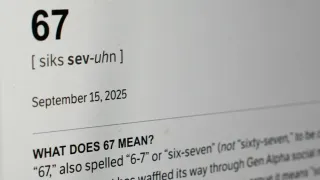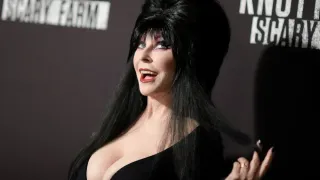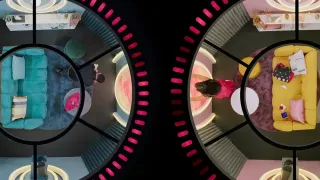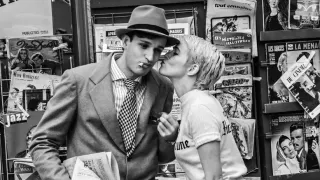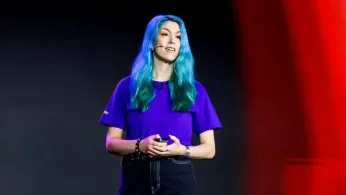
5 hours ago
Virtual Heritage: How Antonia Forster Is Redefining Queer History in the Metaverse
READ TIME: 4 MIN.
In a world often marked by the erasure and marginalization of LGBTQ+ voices, the advent of immersive technology offers a new toolkit for change. At the forefront is Antonia Forster, a British queer technologist, creative coder, and activist whose work melds advocacy and innovation. Forster’s crowning achievement—the LGBTQ+ VR Museum—stands as a testament to the power of digital worlds to rewrite the rules of community, history, and belonging.
Antonia Forster is a queer British technologist and creative leader recognized for her advocacy at the intersection of technology and LGBTQ+ inclusion. With a background in science communication, coding, and immersive design, Forster has consistently used emerging technologies to amplify marginalized voices. Her professional journey has taken her from scientific research into the heart of the UK’s creative tech scene, where she is known for championing accessibility, diversity, and queer narratives in digital spaces. Forster’s work has been featured on platforms such as TEDx, BBC Click, and at major international events, but her ongoing commitment to using technology for social change remains her defining contribution .
Forster’s most impactful project to date is the LGBTQ+ VR Museum, launched in collaboration with DiVRse Technologies. Unlike traditional museums, which are often bound by geography and curatorial gatekeeping, the LGBTQ+ VR Museum is accessible to anyone with a VR headset or compatible device. The museum’s mission is clear: to disrupt historical erasure by allowing queer people to curate and share their own artifacts, memories, and stories in their own voices .
Exhibits include 3D scans of deeply personal items—a pair of wedding shoes, a cherished teddy bear, a feather headdress—each accompanied by an audio narrative recorded by its owner. The museum also showcases digital art, illustrations, and sculptures contributed by LGBTQ+ artists from around the world. “On paper, it sounds incredibly cool, but it is so powerful to experience it,” reflects Yo-En Chin, a designer who collaborated on the project. “We want to continue to use technology to create inclusive, accessible experiences” .
What sets Forster’s project apart is not just the content, but the approach. The museum leverages advanced features such as adaptive content that can respond to visitors’ emotions in real time, ensuring that each experience is unique and affirming . Accessibility is a priority: the virtual space is designed to be navigable by people of all abilities, extending its reach far beyond physical museums.
Forster’s vision is rooted in the belief that “technology should be used not just to replicate reality, but to improve it for those who have been excluded from it.” In public talks, she has emphasized the importance of centering queer voices in technological storytelling: “When we build virtual spaces, we have the power to decide who is visible and whose stories are told. The VR Museum is about returning that power to our community” .
The project also serves a broader social purpose. As noted in coverage by Deloitte, the museum’s collaborative model with business and technology partners demonstrates how cross-sector alliances can amplify marginalized voices at scale . The museum’s open submission process allows queer people globally to contribute, democratizing history and making it participatory.
The rise of queer spaces in VR represents a broader cultural shift. Digital worlds such as VRChat and Horizon Worlds have become new sanctuaries for LGBTQ+ people, especially those in conservative or rural areas where safety and community may be out of reach . The LGBTQ+ VR Museum’s inclusive design aligns with this movement, offering a space where users can explore identity, memory, and belonging without fear of prejudice.
As Luna, a queer digital artist and curator, put it: “In VR, I can exist as pure expression. My body doesn’t define me—my imagination does” . Forster’s work channels this ethos, turning the act of remembering into an act of resistance and celebration.
While the LGBTQ+ VR Museum has been widely praised, it also faces challenges emblematic of the broader VR movement—such as ensuring safety, addressing digital harassment, and preventing the replication of real-world hierarchies in virtual environments . Forster and her collaborators are transparent about the need for ongoing moderation and community input.
There are also questions about how digital spaces can complement, rather than replace, physical activism and community organizing. “The goal is not to leave the real world behind,” Forster has said in interviews, “but to offer new spaces for healing, connection, and learning—especially for those who have never found that offline” .
Antonia Forster’s work is emblematic of a new generation of LGBTQ+ innovators using technology to challenge exclusion and rewrite the future. By anchoring queer history in immersive, accessible virtual spaces, she is forging a legacy that extends far beyond the museum walls. As VR continues to evolve, projects like the LGBTQ+ VR Museum offer a glimpse of what’s possible when technology is wielded not just for entertainment, but for community empowerment and collective memory.
Forster’s story is a reminder that the next frontier of queer liberation may be virtual, but its impact is profoundly real.
